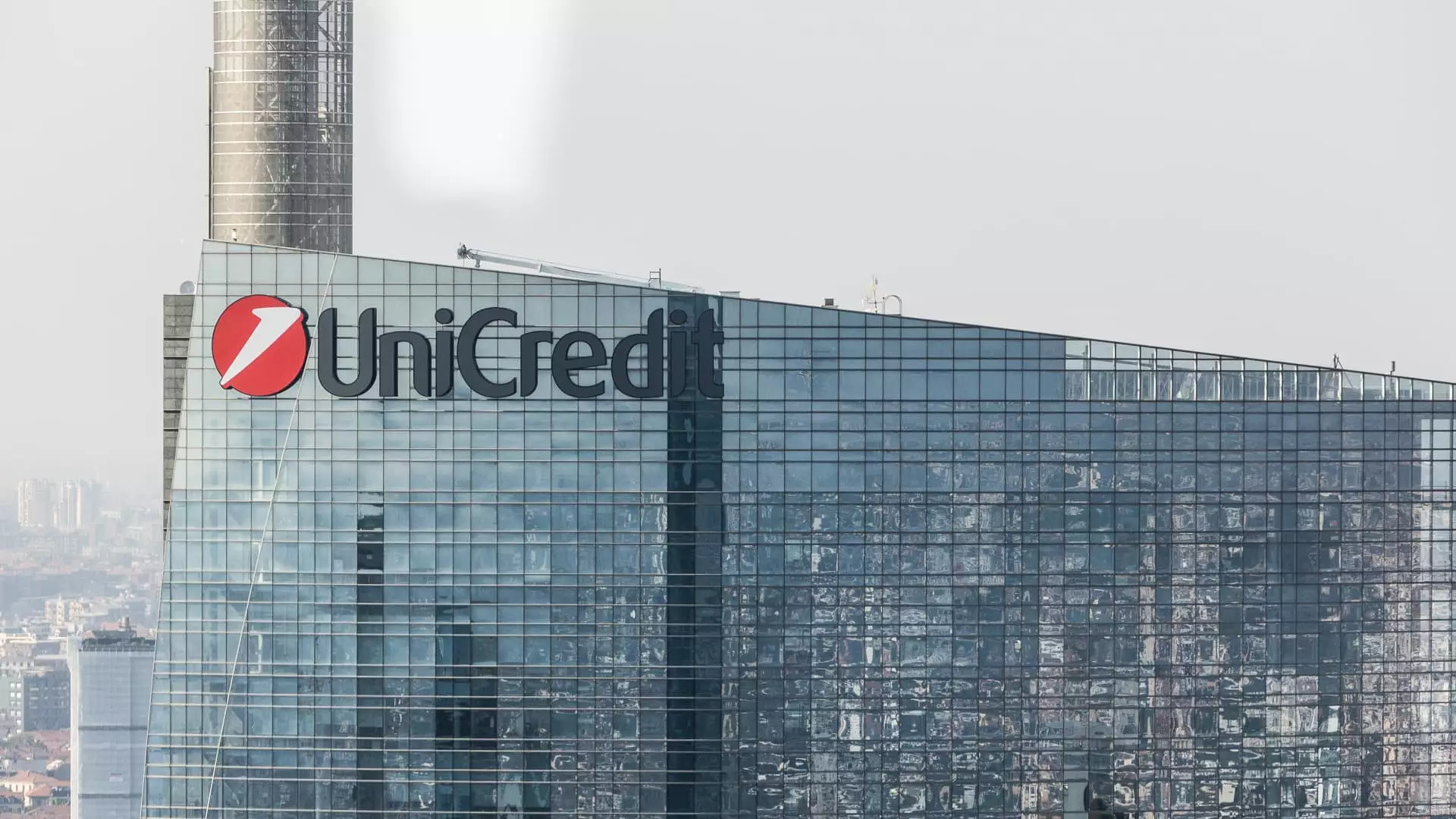The first quarter of the year has proven fruitful for UniCredit, Italy’s second-largest banking institution, as the bank reveals promising fourth-quarter results that have positioned it favorably in a competitive market landscape. Shareholders have reasons to celebrate, given the bank’s decision to enhance financial returns, amidst an ongoing strategy that reflects its broader ambitions in the European banking sector.
Strong Financial Performance Overshadowed by Strategic Concerns
UniCredit’s net profit for the fourth quarter reached an impressive €1.969 billion ($2.03 billion), easily surpassing analysts’ expectations, which had forecasted a figure of €1.803 billion. The bank’s revenues also accentuated its strength, amounting to €6 billion compared to expectations of €5.898 billion. Nevertheless, while these results are commendable, they come with a note of caution regarding the bank’s operating metrics.
The bank’s return on tangible equity (RoTE) dropped to 11.5% from a much more robust 19.7% in the preceding quarter. This decline raises questions about the sustainability of UniCredit’s robust performance, especially amid rising operating costs which increased by 9.5% to €2.5 billion quarter-on-quarter. Furthermore, the common equity tier 1 (CET1) capital ratio—an important measure of a bank’s financial health—dipped slightly from 16.1% to 15.9%. Such figures suggest an evolving challenge for the bank as it strives to balance profitability with cost management and capital stability.
Despite the near-term challenges, UniCredit remains steadfast in its commitment to long-term shareholder value. With full-year net profit for 2023 projected to grow by 8.1% to reach €9.31 billion, the bank has outlined a future where increased cash dividends play a critical role in enhancing shareholder satisfaction. The Board has signaled an increase in cash dividend payout guidance for 2025 to 50% of net profit, a marked increase from the 40% anticipated in 2024.
Moreover, CEO Andrea Orcel has articulated a forward-looking strategy that seeks to enhance both growth and competitive positioning. The objective is clear: aim for a return on tangible equity exceeding 17% over the 2025-2027 period. However, challenges loom on the horizon, as the bank projects revenues for 2025 to exceed €23 billion, which falls short of the €24.8 billion achieved in the prior year. This inadequacy is attributed, in part, to a contraction of business operations within Russia as well as a decline in net interest income—a crucial component of the bank’s earnings.
As UniCredit progresses with its transformation strategy, the bank finds itself at the heart of Italy’s emerging consolidation trends in the banking sector. There is a palpable urgency surrounding UniCredit’s overtures toward mergers and acquisitions, especially following its strategic stake build in Germany’s Commerzbank and its ongoing engagement with Banco BPM, an Italian competitor.
Yet, it is important to consider how these aggressive maneuvers are received on both domestic and international fronts. The German government has described UniCredit’s bid for Commerzbank as “very aggressive” and “untransparent,” reflecting potential resistance to the institution’s approach. Concurrently, UniCredit’s attempts to consolidate within Italy have faced skepticism, with the Italian government keen on the formation of an even larger banking entity alongside Intesa Sanpaolo.
Complicating matters further, UniCredit has recently acquired a 4.1% stake in Italy’s leading insurer, Generali Group. While the lender claims this action is devoid of strategic intentions, it sparks curiosity about the underlying motives and the bank’s broader ambitions in financial services beyond traditional banking.
Lastly, UniCredit’s future strategies will need to navigate Italy’s complex legislative environment, particularly the so-called “golden powers” law, which allows the government to intervene in key sectors, potentially complicating both foreign and domestic acquisitions.
As UniCredit articulates its dual aspirations in the M&A landscape, market participants are left to speculate which path the bank will ultimately pursue. As Orcel aptly notes, “Any inorganic growth must improve our standalone case and meet our strict financial and strategic requirements.” The bank’s commitment to strategic rigor will likely define its trajectory in this competitive market landscape.
While UniCredit celebrates its recent financial successes, a scrutinous eye remains on its strategic directions, competitiveness, and the potential hurdles it may face as it seeks both growth and consolidation in the contemporary European banking landscape.

